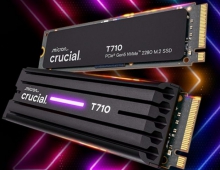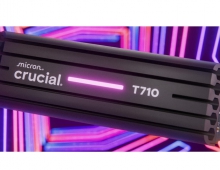Crucial BallistiX DDR3-1600
2. Testing DDR3 memory
In order to test the memory modules, we used the following setup:
- CPU: Intel E6600 Retail
- Motherboard: Asus P5K3 Deluxe Wi-Fi Edition BIOS 0801 (beta)
- PSU: OCZ GameXStream GXS600 SLI-Ready
- VGA: MSI 7600GT Silent (stock memory/core timings)
- HDD: WD 800JB
- OS: Windows XP SP2 with all the latest updates installed

While for benchmarking, we used:
- Sisoft Sandra 2007 SP1
- PC Mark 05 v1.1.0
- Everest Ultimate Edition 2007
- RightMark Memory Analyzer v3.70
- ScienceMark 2
- SuperPI XS Mod v1.50
- Memset v3.30
We overclocked our Intel E6600 CPU up to 3.60GHz, in order to eliminate the CPU factor as much as its possible:
Memory Frequency |
Real Frequency |
Voltage |
FSB:RAM |
CPU x |
FSB |
CPU Speed |
DDR3 1333 CL6-6-6-16 |
666,50 |
1.80 |
3:5 |
9 |
400 |
3600 |
DDR3 1600 CL7-7-7-17 |
575,00 |
1.90 |
1:2 |
9 |
400 |
3600 |
DDR3 1800 CL8-8-8-21 |
625,00 |
2.00 |
1:2 |
8 |
450 |
3600 |
| DDR3 1849 CL8-8-8-24 | 924,10 |
2.25 |
1:2 |
7 |
462 |
3234 |
Keeping the FSB at 400MHz and CPU multiplier at 9x, we could directly compare DDR3-1333, DDR3-1600. Then, we dropped the CPU multiplier to 8x and raised the FSB up to 450MHz, in order to again get 3.6GHz CPU speed. Finally, to find the maximum memory speed, we dropped the CPU multiplier to 7x and raised the FSB. Below are the highest memory speeds we achieved, with 2.25V:

In all cases, the memory modules had to pass each synthetic memory test without any problems. Note, that results vary from memory module to module, and at these very high overclocking speeds, you need very good cooling, for the Northbridge and of course, the CPU.





















